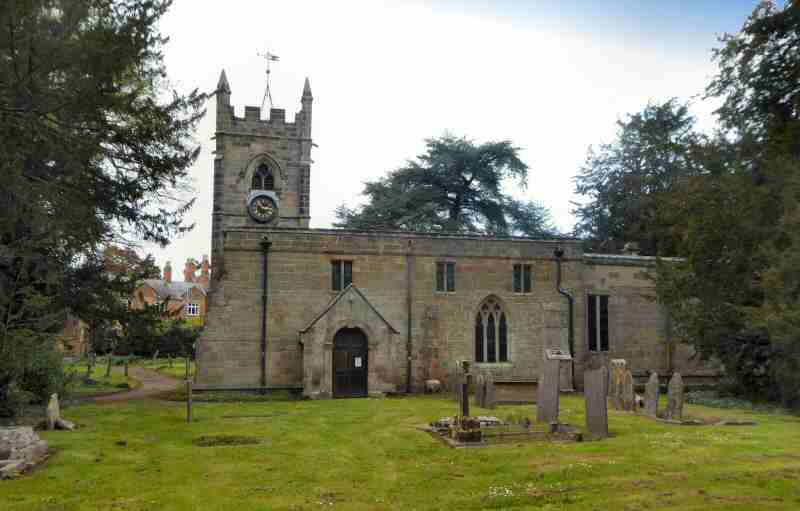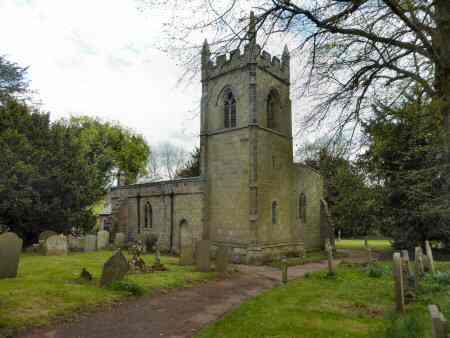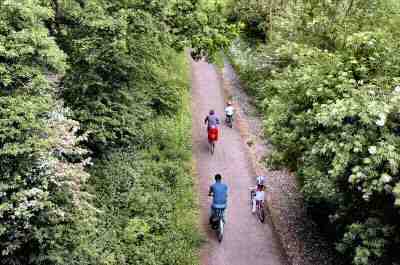RADBOURNE

INFORMATION
Where is it? – Take the signs for Radbourne from the B5020 Mickleover to Kirk Langley Road (SK284362)
What to do? – Radbourne Hall is a private residence but you will be able to get a good view of it from the public footpath through the park – take a look around St Andrew’s Church and the cluster of houses including the rectory that stands nearby – plan a walk along the old railway which runs from close to the Great Northern Public House at Mickleover to Etwall.
Where to eat? – There are no cafes, restaurants or pubs in the village. The Bluebell is a recently renovated public house on Adam’s Road, Kirk Langley. For further information: visit www.bluebellkirklangley.com or telephone 01332 824423 – Meynell Langley Garden Centre Tearoom: contact number is 01332 824084 or visit www.meynellgardens.com-tearoom.
Other places to visit – Sudbury Hall and the Museum of Childhood, which is a National Trust property. The hall includes superb plasterwork ceilings and Grinling Gibbons carvings – Kedleston Hall is one of the best-surviving examples anywhere of the work of Robert Adam. A National Trust property it is lavishly decorated with fine collections of paintings, furniture and sculptures.


PROFILE
Radbourne is a tiny village in the heart of the countryside despite only being a short distance from Mickleover. There are no shops or public houses, just a cluster of cottages, farms, an ancient church and a hall. Both the hall and parkland have recently been the subject of a major restoration. The Manor of Radbourne has been held by the Chandos family since the 13th century and it is one of only a handful of estates that have been passed on by inheritance and marriage since that period.
Bonnie Prince Charlie supposedly had lunch with the Pole family on his ill-fated march to Derby in 1745. Erasmus Darwin, grandfather of Charles, lived at Radbourne Hall for two years after his marriage to Elizabeth Pole in 1781. The location proved to be inconvenient and led to a move into Derby.
CHANDOS-POLE
In 1807, Edward Sacheverell Pole adopted the additional surname of Chandos to commemorate his descent from Sir John Chandos. Since then the family surname has been Chandos-Pole.

RADBOURNE HALL
Radburne Hall was built around 1739 by German Pole to replace a previous building. This was located in the hollow close to the village and was claimed to be able to sleep 100 people and have stabling for 200 horses. It was said that when the brook flooded, barrels of beer had to be collected from the cellar by boat. The existing hall was extended and modernised in 1865. Another major refurbishment took place in the late 1950s. When under the instruction of the owner Major John Walkelyne Chandos-Pole, part of the extended wing was pulled down, which included the ballroom and a servants’ wing.
MODERN RESTORATION
Following the death of the late Mrs Chandos-Pole in 2014, at the age of 102, her daughter, Lady Chichester had the responsibility of managing the rapidly decaying property. The work her parents had undertaken in the 1950s was now causing serious problems. Alarmingly the hall ceiling was beginning to sag, together with several other issues requiring immediate attention. From 2017 to 2020, the whole house underwent substantial repair and improvement. This was followed by awards from the Georgian Group, Historic Houses and the Derbyshire Historic Buildings Trust all of whom praised the work undertaken.
RADBOURNE PARK
The 600-acre park was originally laid out in 1790 by William Emes, a distinguished Derbyshire landscaper. It was the subject of a ten-year restoration plan earlier this century. Work on the plan began in 2003, to transform the park back to its original 1790 design by William Emes. The planting of new hedges and shrubs was the first task. Derby City Council and Derbyshire County Council have also developed a former railway line as a footpath and cycleway linking Derby with Etwall. A field footpath crosses the former railway line and continues towards Radbourne passing close to the hall.
ST ANDREW’S CHURCH
St Andrew’s Church stands by a stream, at the edge of the grounds of Radburne Hall and is hidden behind the old rectory. It contains several medieval benches that were rescued from Dale Abbey. Amongst the monuments to the Pole family is an incised slab to Peter de le Pole dated 1432 and an elaborate tomb chest with an effigy of John de le Pole and his wife dated 1491. The monument to German Pole was erected in 1684 and created and carved by Grinling Gibbons.
